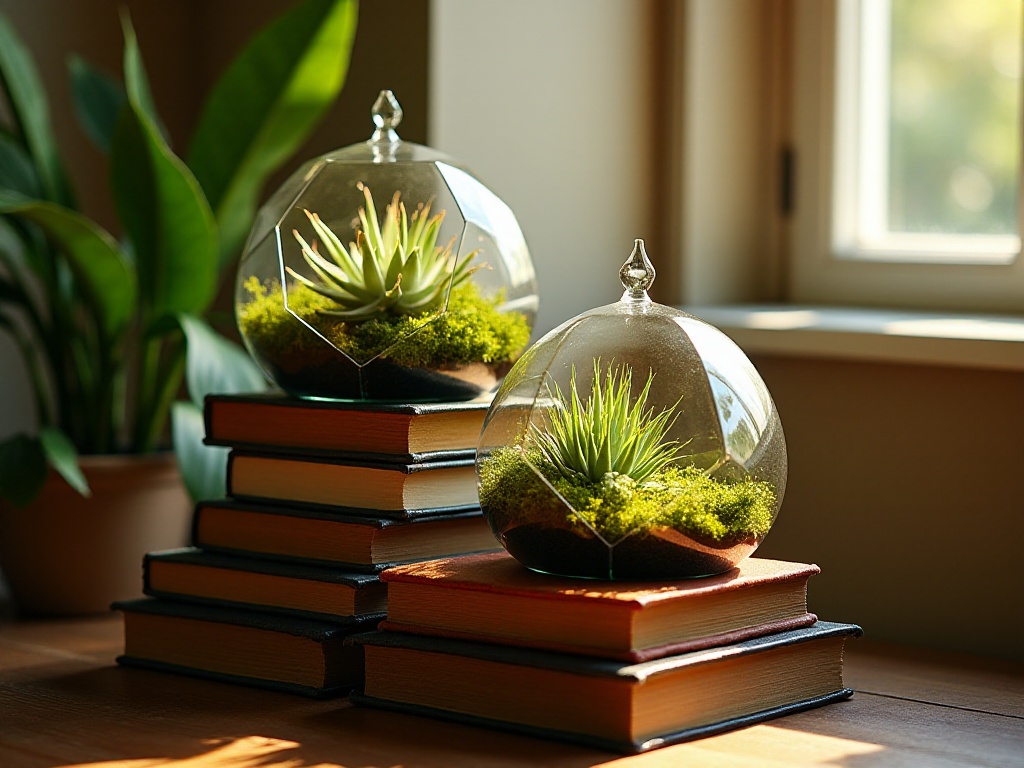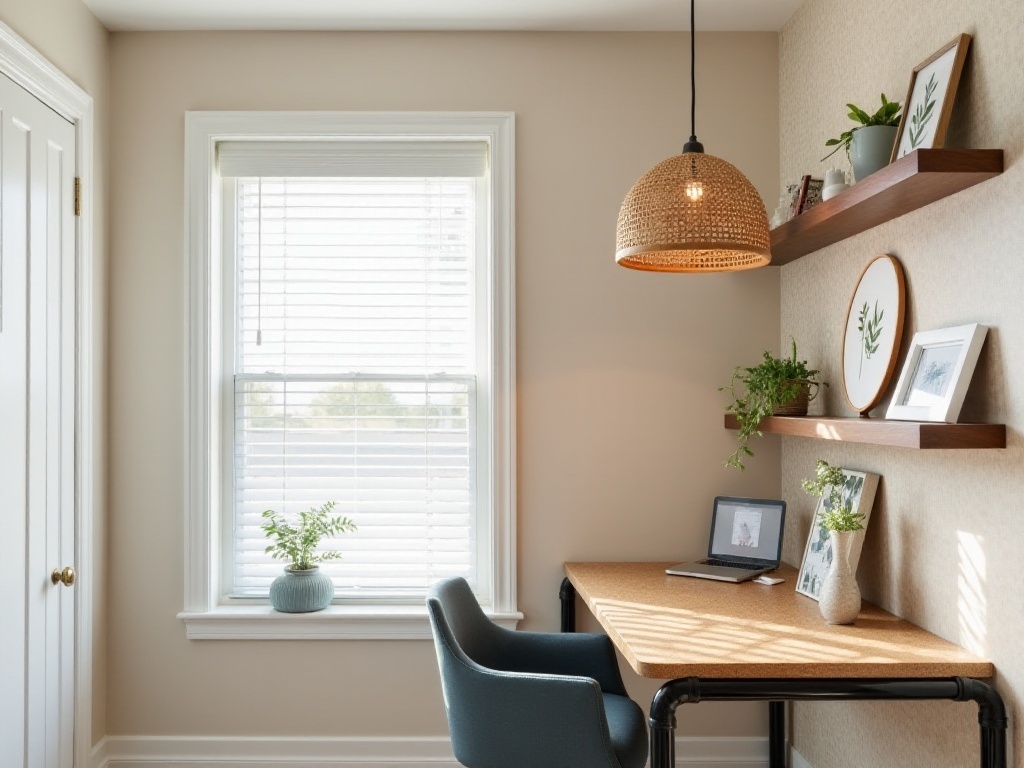Opening Thoughts
I recently rented a small apartment, and honestly, I was devastated at first! In a 50-square-meter home, after fitting a bed, wardrobe, and desk, it was hard to even turn around. Coming home felt like living in a box - super depressing! But after some research and experimentation, I discovered that with the right techniques, even a small space can feel much larger.
Young people today have it really tough - housing prices are so high, yet the units keep getting smaller. According to the National Bureau of Statistics, in 2023 the average size of new residential units in first-tier cities was only 85 square meters, about 20% smaller than ten years ago. But don't lose heart! Today I'll share some super practical tips to make your 50-square-meter nest feel like 120 square meters. I've personally tested all these methods, and the results are amazing!
Spatial Magic
Spatial perception is actually a visual game - once you understand the rules, you can easily make a small house feel bigger. Last year, I committed to renovating my small home, starting with the living room, and the results were absolutely stunning! The whole space looked at least a third larger, and my friends were shocked when they visited, saying they couldn't believe it was the same room.
Let's talk about how to do this, starting with mirror techniques. But don't think just hanging any mirror will do - there's real science to this. I researched for a long time to find the perfect position. I placed a huge floor-to-ceiling mirror in a specific corner of the living room, adjusting the angle countless times until it was perfect. This mirror not only reflects natural light into every corner of the room but creates an illusion of extended space, making the entire living room appear almost twice as large!
This reminds me of my trip to Europe. Do you know why the Hall of Mirrors in Versailles is so famous? It's because they used 358 mirrors to create an infinite visual effect. While we can't go that extreme at home, the principle is the same. Using mirrors strategically can achieve incredible results.
Regarding furniture placement, I made many rookie mistakes at first. Initially, I thought pushing the sofa against the wall would save space, but it made the living room feel cramped. Later, I boldly tried pulling the sofa 30 centimeters away from the wall, and the entire space immediately transformed! Those 30 centimeters created a "breathing space" that made the whole layout feel more open.
I also discovered that leaving proper distances between furniture actually makes the space appear larger. For instance, I deliberately left enough walking space between the coffee table and sofa, which not only proved practical but made the entire space flow better. Now I understand why high-end show homes are always arranged this way!
Visual Focus
When it comes to spatial design, having a focal point is crucial. Just like photography needs a subject, a room needs a visual focus. I invested significantly in creating a natural wood accent wall in the living room and hung a huge abstract painting on it. I found this painting at an art market - while it's not from a famous brand, its colors are particularly warm and always improve my mood when I look at it.
Interestingly, whenever friends visit, this wall immediately catches their attention. Some say, "Wow, what a unique painting!" while others comment, "The wood wall is so stylish!" Either way, this visual focal point successfully diverts attention from the room's size.
I put considerable effort into choosing materials. I used lots of wood elements throughout the home, from the coffee table to bookshelves, and even small decorative pieces, all in unified wood tones. This not only makes the space look more coordinated but also creates warmth. Every time I walk through the door, I feel instantly comforted.
I love getting inspiration from high-end hotels, noticing their extensive use of natural wood and stone materials. This isn't coincidental - these natural materials really give people a sense of stability and comfort. While my budget can't match hotels, using these materials in key locations still creates impressive results.
Storage Art
Storage is absolutely the most crucial topic for small apartments! I can proudly say that my storage design is truly masterful. An entire wall of the living room was converted into floating storage cabinets - simple and elegant on the surface, but actually a treasure chest inside. Clothes, books, miscellaneous items - everything has its perfect place, and it all looks neat.
This design was inspired by Japanese organization queen Marie Kondo. She once said something very sensible: "A home's storage space should occupy at least 15% of the total area to be sufficient." This really resonated with me! I used to think more storage meant wasting space, but now I understand that good storage design actually makes the entire space more neat and comfortable.
My storage cabinet design has a special trick - frequently used items are placed within easy reach, while less-used items go up high or in corners. This makes the entire storage system more efficient. I also chose sliding doors, eliminating concerns about doors taking up space when opened.
Lighting Design
Speaking of lighting, this is my proudest achievement! I designed a three-layer lighting system that's like magic, creating various atmospheres. There's main lighting on top for basic illumination; LED strip lights on the walls for warm ambient light; and accent lights in corners that create a cozy evening atmosphere.
The amazing thing is these lights can be freely combined for different scenarios. Main lights for work - bright and refreshing; just the strip lights and corner lights for movies - instant theater feeling; all three types together for gatherings - the whole space comes alive.
I especially love evenings with just the strip lights on, when the room is bathed in soft light. Add some music, and even the smallest space becomes incredibly warm. Sometimes I lie on the sofa, watching these light changes, and feel completely relaxed.
Conclusion and Future Outlook
While these improvements sound simple, they actually require constant adjustment. I suggest starting gradually with the simplest changes. Try rearranging furniture or adding a strategically placed mirror. Take it slow, and you'll find each small change brings pleasant surprises.
Remember, having a small home isn't the problem - what matters is how you make it work. Through these techniques, my small nest has become not only more practical but full of cozy living atmosphere. Every time I return from work and open the door, seeing this carefully crafted space makes all fatigue disappear.
Everyone has different living needs, so these experiences are just for reference. Have you used any clever design tricks in your home? Or encountered any particularly challenging space problems? Feel free to tell me in the comments section, so we can discuss and learn from each other. After all, creating an ideal living space is everyone's pursuit, isn't it?








